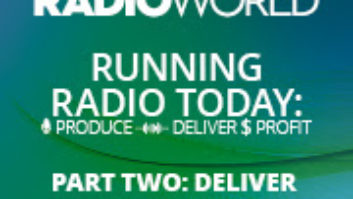Radio as we know it has been around for almost a century in a basically unchanged form.
Of course, there has been a huge amount of progress in terms of the technology for studios, automation and transmitters, but the fundamentals remain the same: You make a program, you transmit it and people listen to it using their radio at home, in the car or in the office.
This is something we�ve been doing for a long time and we do it quite well. It may seem there are no big surprises left for the world of broadcasting� but I think this is about to change.
Android Auto user interfaces, as depicted on the Pioneer Systems website.

Streaming technology is evolving at a rapid pace, and new services are popping up everywhere. Apple, Google, Spotify, et al, each offer streaming services with some sort of monetization, whether via advertisements or a monthly user fee. This is not a huge technological breakthrough, but more of a natural evolution for streaming.
The big breakthrough is more in the area of application of these services. How are people able to use them?
WHAT I WANT
I�ve been talking to many companies in this industry on how I think this would work on a large scale, and the basics behind my thoughts are always these: It needs to be as easy as what we�ve been using for the past century.
When I step into my car, I turn the key and the radio starts playing � and that�s what I want for the replacement of AM/FM.
I don�t want to pair my phone with the car � or even worse, plug in cables, start an app and reach for my phone each time I want to switch stations.
Apple CarPlay It should be as easy as turning on your radio and scrolling through streams, the same as you would tune through the AM/FM band.

Luckily, my prayers have been answered: Apple is rolling out its Apple CarPlay and Google is doing a similar thing with its Android Auto.
At first, I was afraid that a lot of car manufacturers were going to develop their own (usually not so great) solutions. And some did. But, fortunately, it also appears that a lot of the big manufacturers are embracing these platforms, and some even offer both Google and Apple�s digital dash interfaces.
One in five passenger vehicles across the globe will be connected by 2019, according to the new report from Juniper Research (http://tinyurl.com/juniperresearchreport), and I�m sure that this number will be much higher in western countries in just a couple of years.
You must to be ready to offer your services on these devices and this is where I see a huge gap between the traditional radio and purveyors of this new technology.
THE AD EFFECT
Apart from listening experience and quality, there is also a lot going on in the world of advertising.
I work for a Dutch TV broadcaster, and we are always looking for ways to monetize our content.
At this moment, we see a lot happening in targeted advertisement and last moment bidding. This is a technique where just before an ad break comes up, we ask an ad network with a set of user profile criteria to come back with a list of ads to play.
While this is nothing new, on the other side of the ad network, there will be real-time bidding going on between companies that want their ad to be played. The highest bidder will win and that is the ad that will be served. The end result is that the most expensive (and relevant) ad is served to the user.
Over the past few years, I�ve been discussing this type of monetization with companies in the radio industry, but I haven�t seen this type of service offered for radio just yet. I think that there will be a need for a turnkey solution that offers this out-of-the box to compete with the emerging streaming services.
In my next column, we will tackle how broadcast radio can compete against (or with) streaming services.











